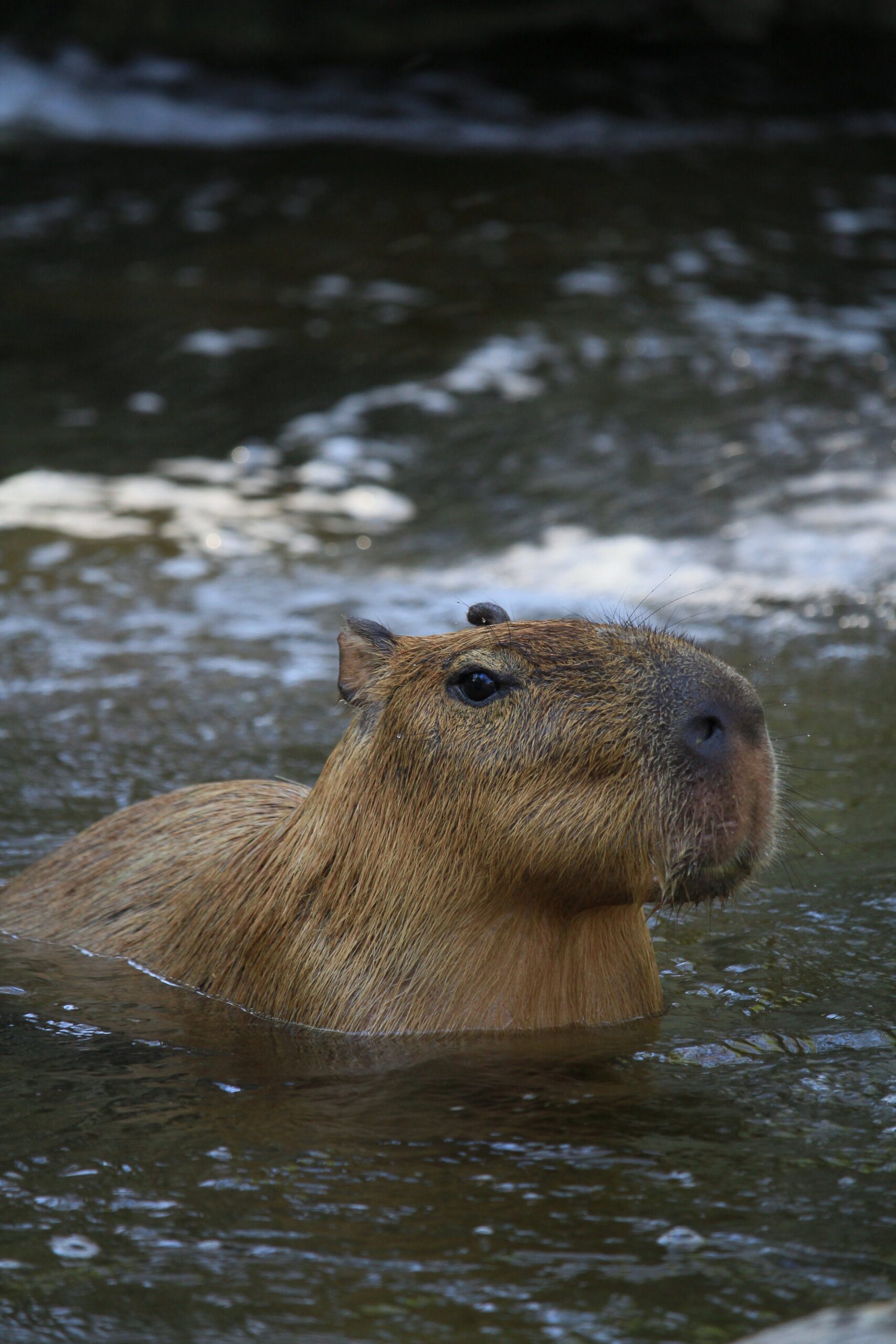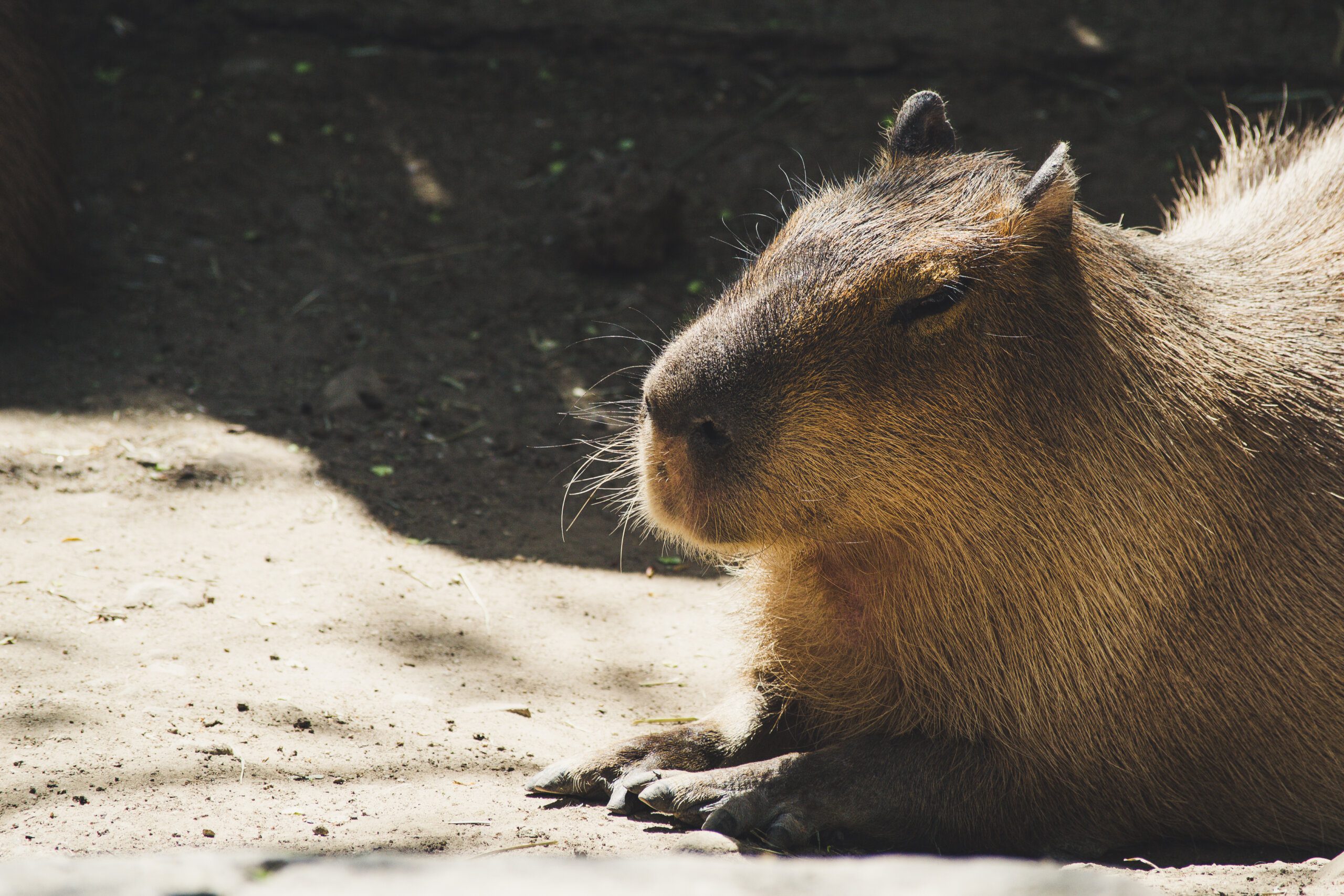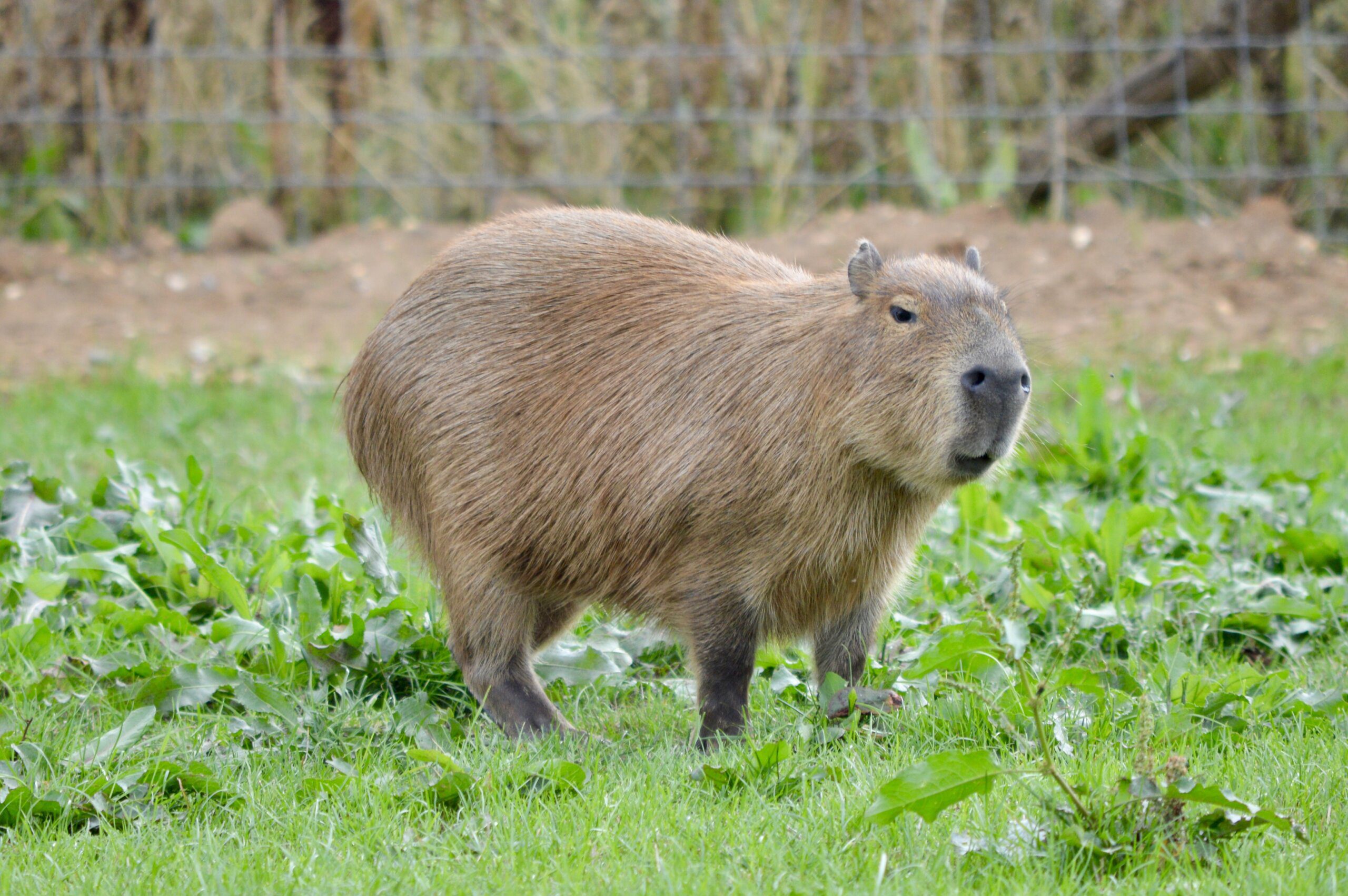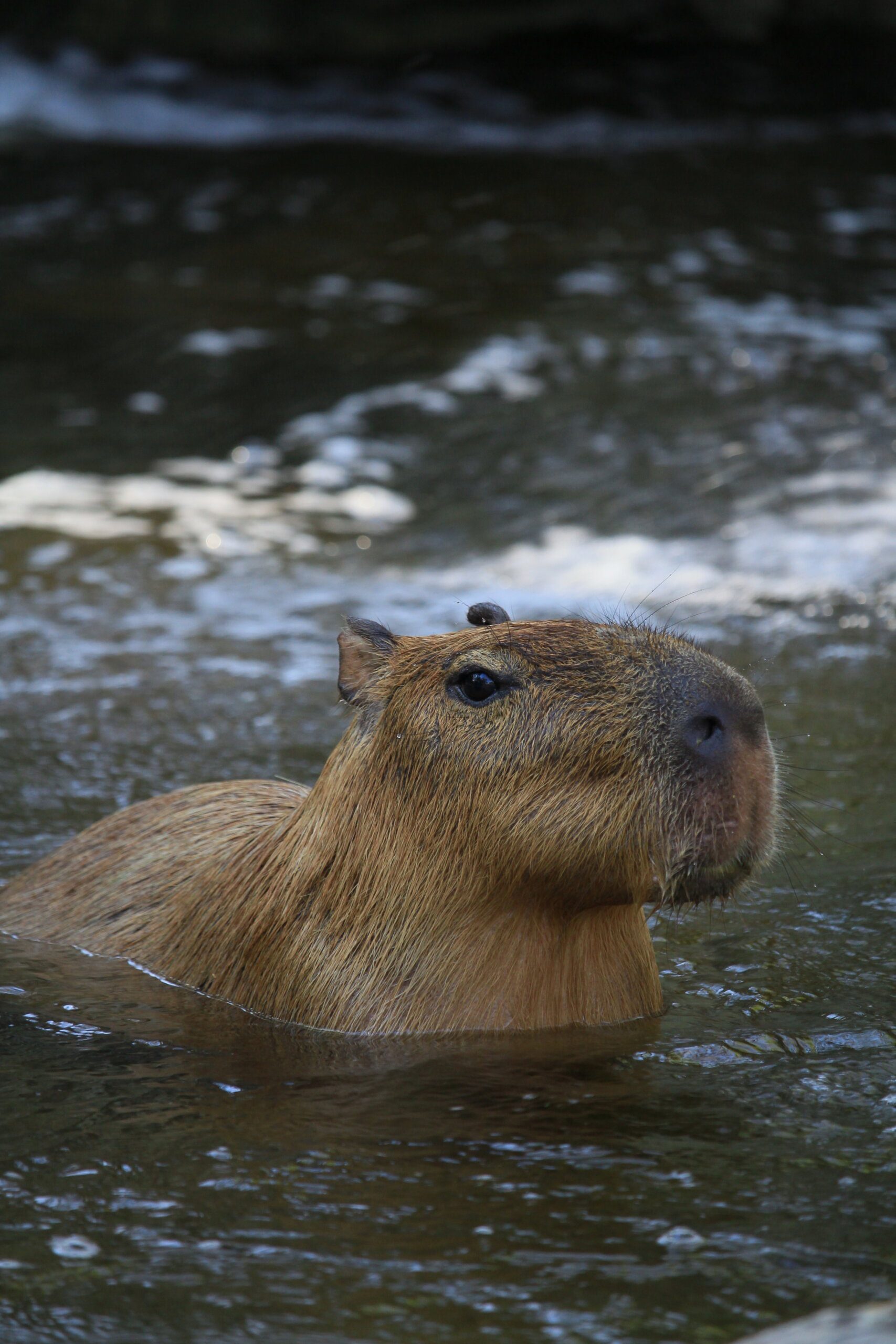Imagine yourself in the remarkable Amazon Rainforest, surrounded by lush greenery and the unique sounds of wildlife. In this vibrant ecosystem, a fascinating creature roams freely – the capybara. But have you ever wondered what these adorable animals feast upon in their natural habitat? Join us on an extraordinary journey as we unveil the diverse and herbivorous diet of capybaras in the Amazon Rainforest. Prepare to be captivated by the surprising delicacies that fuel these lovable giants and discover the vital role they play in maintaining the delicate balance of their enchanting environment.

Habitat of Capybaras in the Amazon Rainforest
Range and Distribution
Capybaras, the largest rodents in the world, are native to the Amazon Rainforest and can be found throughout South America. Their range extends from Panama in Central America to northern Argentina. Within the Amazon Rainforest, capybaras inhabit various countries, including Brazil, Peru, Colombia, and Venezuela. The diverse ecosystems and water bodies in the Amazon provide an ideal habitat for these semi-aquatic animals.
Preferred Habitats
Capybaras have a strong affinity for living near bodies of water, such as rivers, lakes, and swamps. They are well-adapted to both terrestrial and aquatic environments. In the rainforest, capybaras typically inhabit marshy areas and floodplains, where they can easily access both water and vegetation. They make their burrows near water sources, providing them with protection and easy access to their preferred food sources.
Behavioral Adaptations
Capybaras have evolved various behavioral adaptations to thrive in the Amazon Rainforest. They are highly social animals, often forming large groups known as ‘herds’ or ‘capybara gangs.’ This social structure provides them with increased protection from predators and allows for cooperative foraging. Capybaras are also excellent swimmers, utilizing their webbed feet to navigate through water bodies. Their ability to remain submerged for extended periods helps them evade predators and access underwater food sources.
Plant-Based Diet of Capybaras in the Amazon Rainforest
Grass and Herb Consumption
Grasses and herbs form a significant portion of a capybara’s diet. They consume a variety of grass species, such as Paspalum and Panicum, which are abundant in the lush rainforest. Capybaras have sharp front teeth that allow them to effectively graze on grass, reaching down and cropping it close to the ground. Their grazing behavior helps maintain the grassland ecosystem by controlling the growth of vegetation and promoting the growth of diverse plant species.
Aquatic Plants
Due to their semi-aquatic nature, capybaras have adapted to consume various aquatic plants. They feed on aquatic vegetation such as water hyacinths, water lilies, and duckweed. These plants provide essential nutrients, hydration, and fiber to their diet. Capybaras are capable of diving underwater to access submerged aquatic plants, utilizing their strong jaws and lips to rip and consume these nutrient-rich plants.
Tree Bark and Fruits
In addition to grasses and aquatic plants, capybaras also consume tree bark and fruits. During the dry season when the availability of grasses may decrease, capybaras turn to tree bark as a supplementary food source. They use their incisors to chew through the bark and feed on the underlying nutritious cambium layer. Furthermore, capybaras have a taste for fruits, including the fallen fruits from trees like palm trees. This allows them to obtain essential vitamins and minerals and contribute to seed dispersal in the rainforest ecosystem.

Digestive System and Adaptations of Capybaras
Specialized Teeth for Grazing
Capybaras have highly specialized teeth that have adapted to their herbivorous diet. Their front teeth, known as incisors, are sharp and continuously growing. This adaptation allows them to graze on grasses close to the ground, enabling efficient consumption of plant material. Additionally, their molars are flat and ridged, facilitating the grinding and chewing of tough plant matter.
Digestive Anatomy
The digestive system of capybaras is also well-suited to their plant-based diet. They possess a spacious, multi-chambered stomach that allows for the breakdown of fibrous plant material through fermentation. This fermentation process occurs in the cecum, a large pouch connected to the large intestine. Bacteria within the cecum help break down cellulose, a plant fiber that is difficult to digest, into simpler compounds that can be absorbed and utilized by capybaras.
Fermentation Process
Capybaras rely on a fermentation process to extract maximum nutrients from their plant-based diet. This process occurs in their cecum, where specialized bacteria break down complex carbohydrates that were not fully digested in the stomach. The bacteria produce volatile fatty acids as a byproduct, which capybaras absorb and use as an energy source. This unique adaptation enables them to efficiently extract nutrients from fibrous plant material and thrive on a primarily herbivorous diet.
Feeding Patterns and Behavior of Capybaras
Grazing Behavior
Capybaras are predominantly grazing animals, spending a significant portion of their day foraging for food. They feed mainly during the early morning and late evening hours, avoiding the intense heat of the day. Grazing behavior involves slowly moving through the grasslands and cropping vegetation close to the ground. Capybaras have a selective feeding pattern, preferring new growth and tender shoots, which are more nutritious and easier to digest.
Foraging Strategies
Capybaras employ various foraging strategies to maximize their food intake. They utilize their strong sense of smell and acute hearing to detect potential food sources. Their webbed feet enable them to navigate through different habitats, such as marshes or forest edges, in search of preferred vegetation. Capybaras also engage in localized grazing, where they concentrate their foraging activities in specific areas, ensuring more efficient utilization of available resources.
Group Feeding Dynamics
Capybaras are highly social and often forage together, forming large groups consisting of several individuals. This group feeding dynamic provides advantages such as increased protection against predators and improved detection of food sources. When multiple individuals forage simultaneously, they can actively communicate and warn the group of any potential threats, ensuring the safety of the herd while they feed.

Herbivory for Capybara Population Control
Importance of Herbivory in Capybaras
Herbivory, or the consumption of plant material, plays a crucial role in capybara populations. Capybaras are considered herbivorous keystone species, meaning they have a significant impact on the structure and function of their ecosystem. By consuming substantial amounts of vegetation, capybaras help control the growth of plant species, preventing overgrowth and promoting biodiversity. Their grazing behavior contributes to maintaining a balanced ecosystem within the Amazon Rainforest.
Role in Maintaining Ecosystem Balance
Capybaras’ herbivorous diet indirectly influences various ecological processes and relationships within the rainforest. Their selective grazing helps regulate the composition of plant communities, allowing different species to coexist. Through their feeding activities, capybaras can shape the distribution and availability of resources, creating niches for other species. Additionally, their excretion of partially digested plant matter helps fertilize the soil, promoting nutrient cycling and enhancing the overall health of the ecosystem.
Capybaras and Seed Dispersal
Seed Dispersal Mechanisms
Capybaras play a vital role in seed dispersal within the Amazon Rainforest. As they consume fruits and plant material, capybaras inadvertently aid in seed dispersal by ingesting seeds along with the surrounding pulp. These seeds are then transported through the capybara’s digestive system, remaining viable due to their protective coating. After being excreted in new locations, they have a chance to germinate and give rise to new plant growth, contributing to the regeneration and diversity of the rainforest.
Contribution to Forest Regeneration
The dispersal of seeds by capybaras contributes to forest regeneration and the maintenance of healthy ecosystems. By moving seeds away from the parent plants, capybaras play a crucial role in preventing overcrowding and promoting genetic diversity. The varied diet of capybaras ensures that seeds from a wide range of plant species are dispersed, further enriching the forest ecosystem and enhancing its resilience to environmental changes.
Interaction with Other Species in the Rainforest
Capybaras as Prey
While capybaras are herbivorous animals, they also have their place within the food chain of the Amazon Rainforest. They serve as an important food source for several predators, including jaguars, anacondas, caimans, and large birds of prey. Their social behavior and large herd size increase their overall protection against predation, but individual capybaras can still fall victim to the predatory pressures of the rainforest.
Predators of Capybaras
Capybaras face predation from a diverse array of rainforest species. Large predators like jaguars and caimans are capable of hunting and overpowering capybaras, especially when they are solitary or in smaller groups. Anacondas, the massive snakes of the Amazon, also pose a threat to capybaras, using their powerful constricting abilities to subdue their prey. Various bird species, such as harpy eagles and black vultures, have been observed preying on young or weakened capybaras.
Symbiotic Relationships
Capybaras also engage in symbiotic relationships with other species in the rainforest. For example, capybaras often share their habitats with birds known as oxpeckers or tickbirds. These birds perch on the capybaras, feeding on ticks and other parasites that inhabit their fur. In return, the oxpeckers provide the capybaras with a convenient grooming service, removing harmful parasites and enhancing their overall well-being.
Influence of Seasonal Changes on Capybara Diet
Variation in Food Availability
Seasonal changes significantly influence the availability of food for capybaras in the Amazon Rainforest. During the rainy season, when the rivers flood their banks and grasslands thrive, capybaras have an abundant supply of grasses and aquatic plants to consume. However, during the dry season, when water levels decrease and grasses become scarce, capybaras must rely more heavily on alternative food sources such as tree bark and fallen fruits to sustain themselves.
Adaptations to Seasonal Changes
Capybaras have developed various adaptations to cope with the fluctuations in food availability caused by seasonal changes. Their digestive system allows them to efficiently extract nutrients from fibrous plant material, enabling them to survive on a diet that may vary in composition and abundance throughout the year. Capybaras also exhibit a degree of flexibility in their feeding patterns, adapting their foraging strategies and utilizing different food sources as the seasons change.
Impact of Human Activities on Capybara Diet
Deforestation and Habitat Loss
The expanding human population and deforestation in the Amazon Rainforest pose significant threats to capybaras and their diet. As large areas of forest are cleared for agriculture, urban development, and logging, capybaras lose their natural habitat and the diverse range of food sources it provides. The destruction of their preferred habitats reduces the abundance of grasses, aquatic plants, and trees that form an integral part of their diet.
Hunting and Poaching
Capybaras are hunted for their meat, fur, and oil, which are used for various purposes by local communities. Unsustainable hunting and poaching practices can lead to a decline in capybara populations, disrupting the delicate balance of the rainforest ecosystem. Overexploitation of capybaras disrupts their feeding patterns and can have cascading impacts on the availability of resources for other species that depend on them.
Climate Change Effects
Climate change poses additional challenges to capybara populations and their dietary needs. Changes in rainfall patterns, temperatures, and extreme weather events can negatively impact the growth and availability of grasses, aquatic plants, and trees that capybaras rely on for survival. This disruption in their food sources can lead to population declines and affect the overall health and sustainability of the rainforest ecosystem.
Conservation Efforts for Capybara Habitat and Diet
Protected Areas and Reserves
Conservation organizations and governments have established protected areas and reserves in the Amazon Rainforest to safeguard capybara habitats and their diverse diet. These protected areas help maintain the ecological integrity of the rainforest and provide a safe haven for capybaras to thrive. By preserving the natural habitats and food sources of capybaras, these initiatives ensure their long-term survival and contribute to the overall conservation of the rainforest ecosystem.
Awareness and Education Programs
Raising awareness about capybaras and their diet is crucial for their conservation. Education programs and initiatives that highlight the importance of capybaras in maintaining ecosystem balance and seed dispersal play a significant role in fostering appreciation and respect for these unique animals. By increasing awareness, individuals can make informed choices to support conservation efforts and reduce the negative impacts of human activities on capybara habitats and diet.
Sustainable Resource Management
Implementing sustainable resource management practices is vital for the conservation of capybara habitats and their diets. This includes measures to prevent deforestation, promote responsible hunting practices, and mitigate the effects of climate change. By adopting sustainable approaches, governments, communities, and industries can ensure the long-term viability of capybara populations and protect the intricate web of ecological relationships within the Amazon Rainforest.



